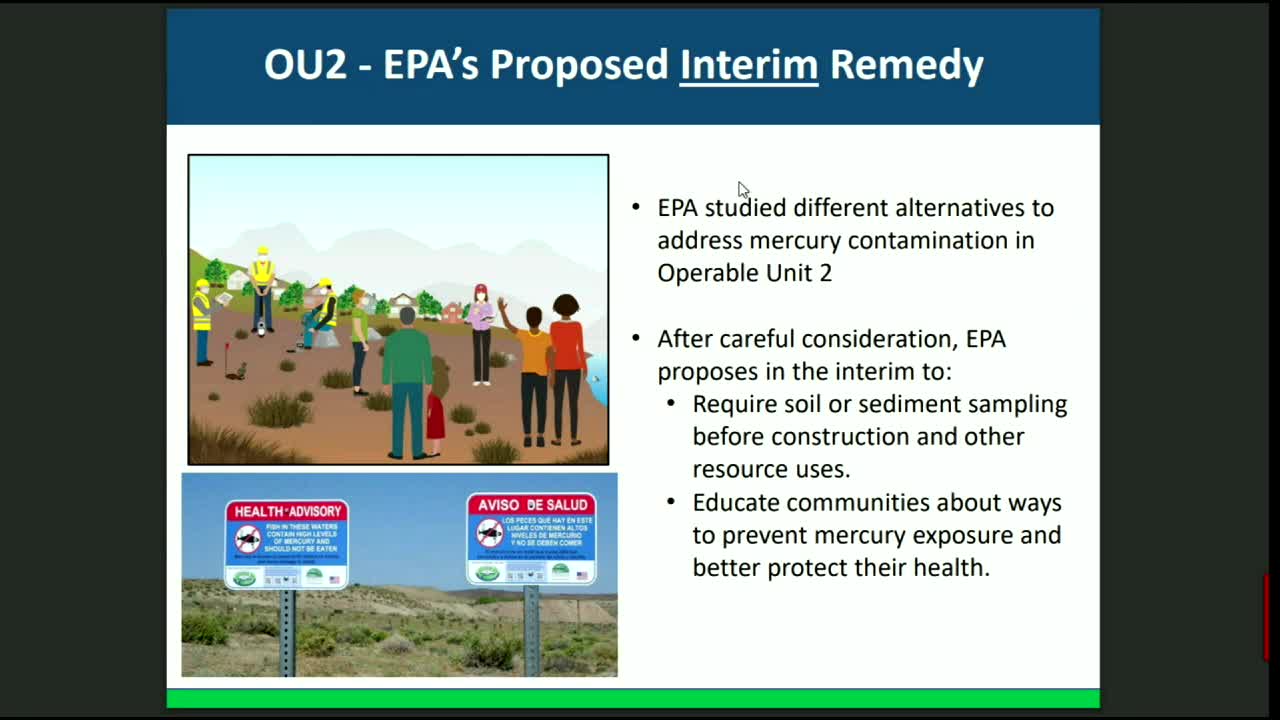Community grapples with Superfund site contamination concerns
June 06, 2024 | Carson City, Ormsby County, Nevada

This article was created by AI summarizing key points discussed. AI makes mistakes, so for full details and context, please refer to the video of the full meeting. Please report any errors so we can fix them. Report an error »

In a recent government meeting, officials discussed ongoing environmental concerns related to a Superfund site, particularly focusing on mercury contamination in Carson City. The meeting revealed that only seven out of approximately twenty homes in a designated sampling area agreed to have their yards tested for contaminants, with all results returning negative. This raises questions about the safety of the remaining homes, although officials suggested that the low levels found could indicate that the other properties are likely safe as well.
The discussion also highlighted the challenges posed by the Superfund designation, particularly regarding funding for disaster mitigation. Officials noted that if a disaster were to occur within the Superfund area, FEMA disaster mitigation funds would not be available for local counties, complicating recovery efforts. This issue has already affected at least one county, prompting officials to seek solutions through ongoing discussions with FEMA.
Additionally, the meeting addressed the interim remedy for the Superfund site, which includes community outreach and education about mercury exposure. The Environmental Protection Agency (EPA) plans to conduct further monitoring and sampling in specific areas to inform a final remedy. However, concerns were raised about the long-term implications of the Superfund designation, especially given the absence of responsible parties for cleanup costs.
Community members expressed frustration over the potential delays in addressing environmental hazards, particularly in light of severe weather events that could exacerbate contamination issues. One resident inquired about testing at a local golf course, emphasizing the need for transparency and proactive measures to ensure public safety.
As the meeting concluded, officials reiterated their commitment to protecting human health and the environment while navigating the complexities of the Superfund process. The timeline for finalizing the interim record of decision is expected by early next year, but the path forward remains uncertain, particularly regarding funding and the extent of future testing in public areas.
The discussion also highlighted the challenges posed by the Superfund designation, particularly regarding funding for disaster mitigation. Officials noted that if a disaster were to occur within the Superfund area, FEMA disaster mitigation funds would not be available for local counties, complicating recovery efforts. This issue has already affected at least one county, prompting officials to seek solutions through ongoing discussions with FEMA.
Additionally, the meeting addressed the interim remedy for the Superfund site, which includes community outreach and education about mercury exposure. The Environmental Protection Agency (EPA) plans to conduct further monitoring and sampling in specific areas to inform a final remedy. However, concerns were raised about the long-term implications of the Superfund designation, especially given the absence of responsible parties for cleanup costs.
Community members expressed frustration over the potential delays in addressing environmental hazards, particularly in light of severe weather events that could exacerbate contamination issues. One resident inquired about testing at a local golf course, emphasizing the need for transparency and proactive measures to ensure public safety.
As the meeting concluded, officials reiterated their commitment to protecting human health and the environment while navigating the complexities of the Superfund process. The timeline for finalizing the interim record of decision is expected by early next year, but the path forward remains uncertain, particularly regarding funding and the extent of future testing in public areas.
View full meeting
This article is based on a recent meeting—watch the full video and explore the complete transcript for deeper insights into the discussion.
View full meeting